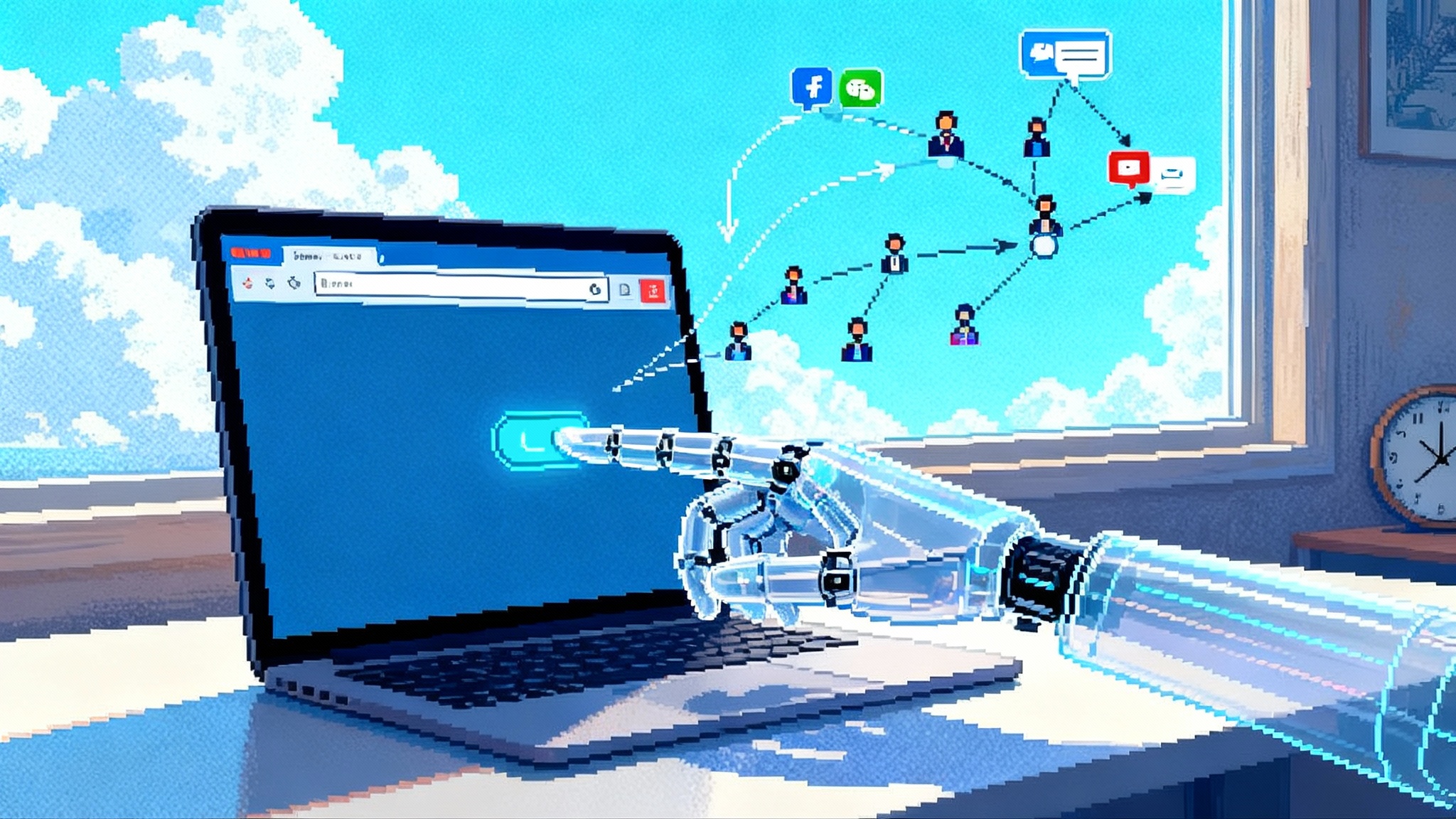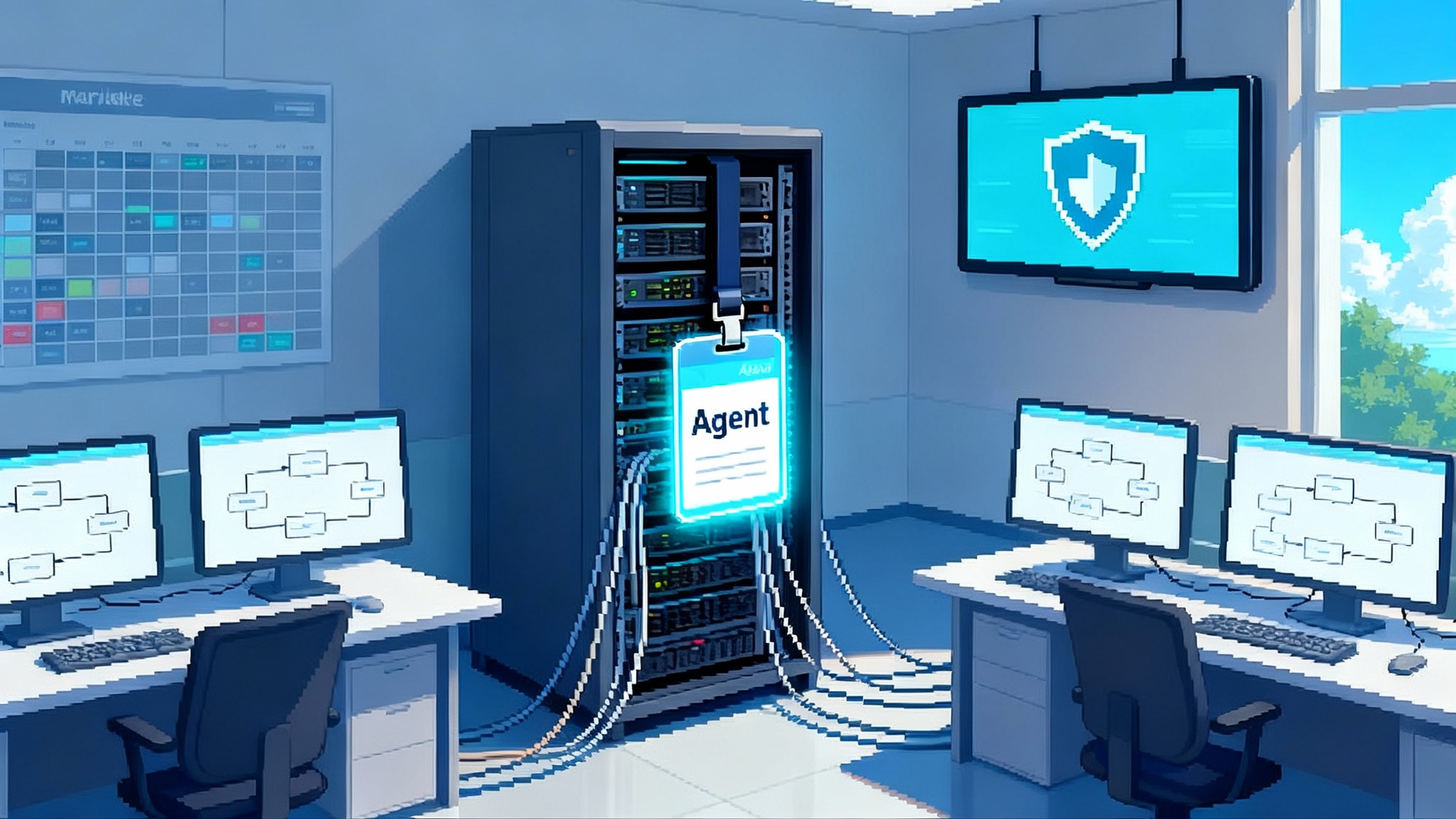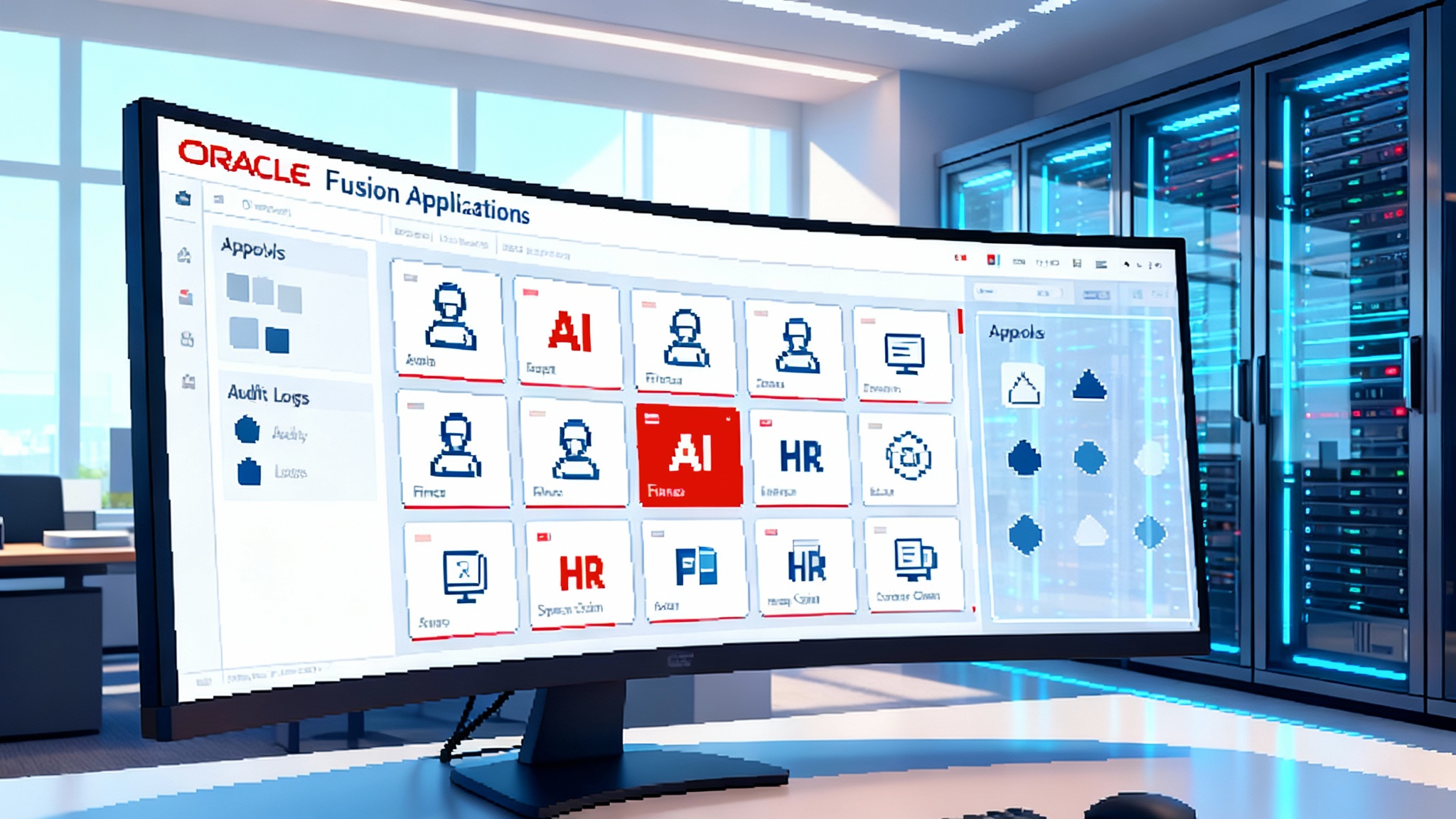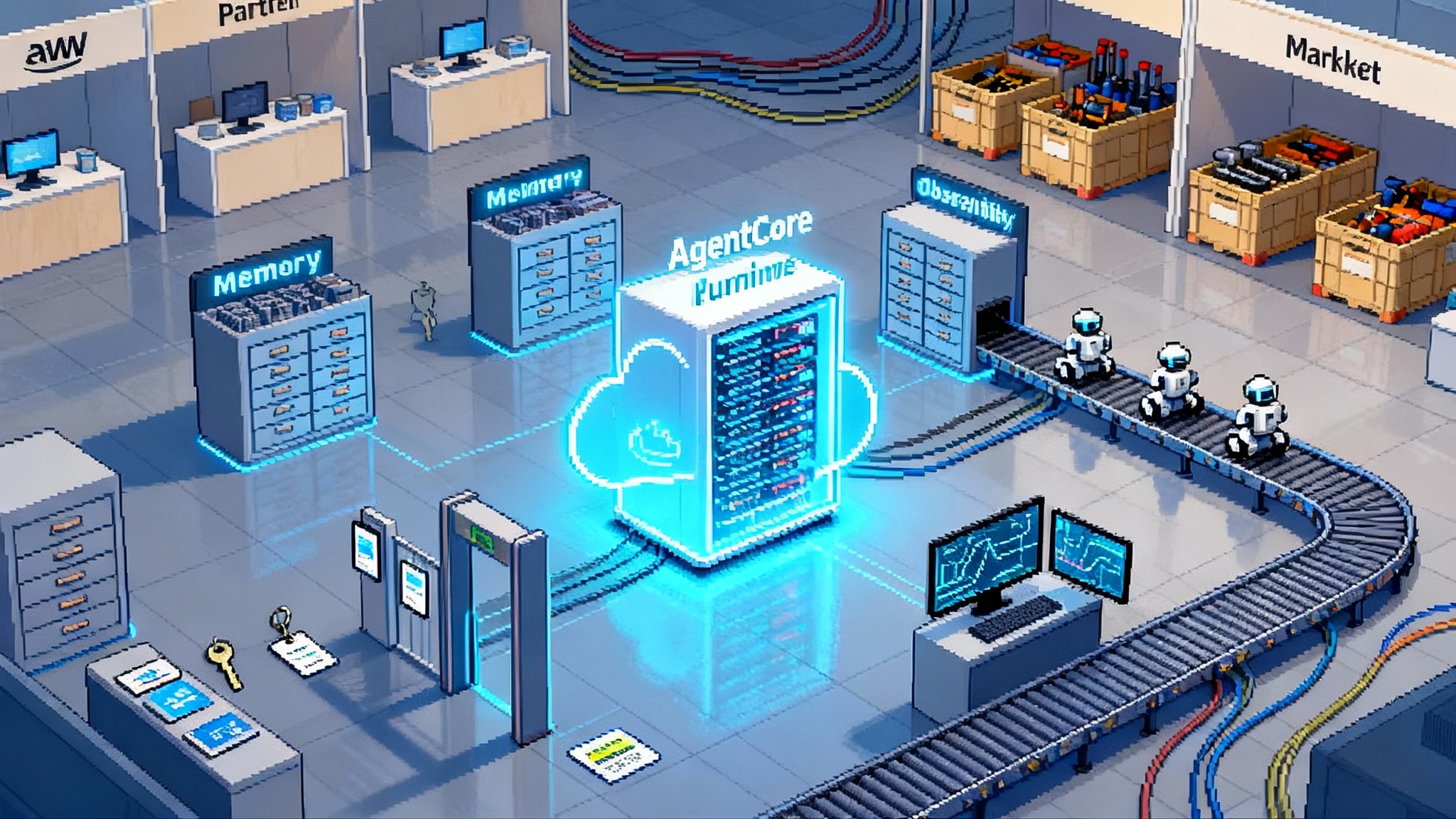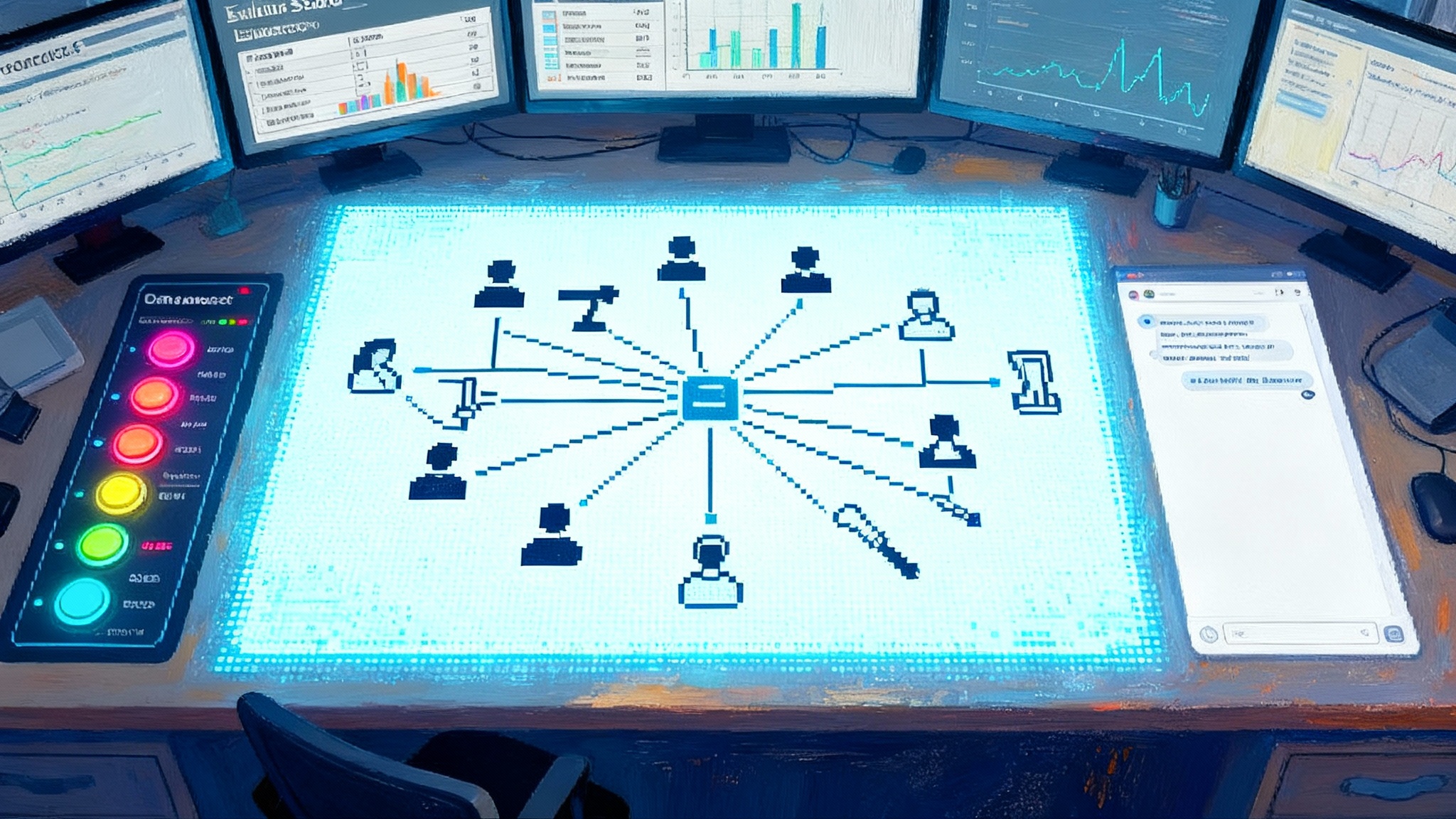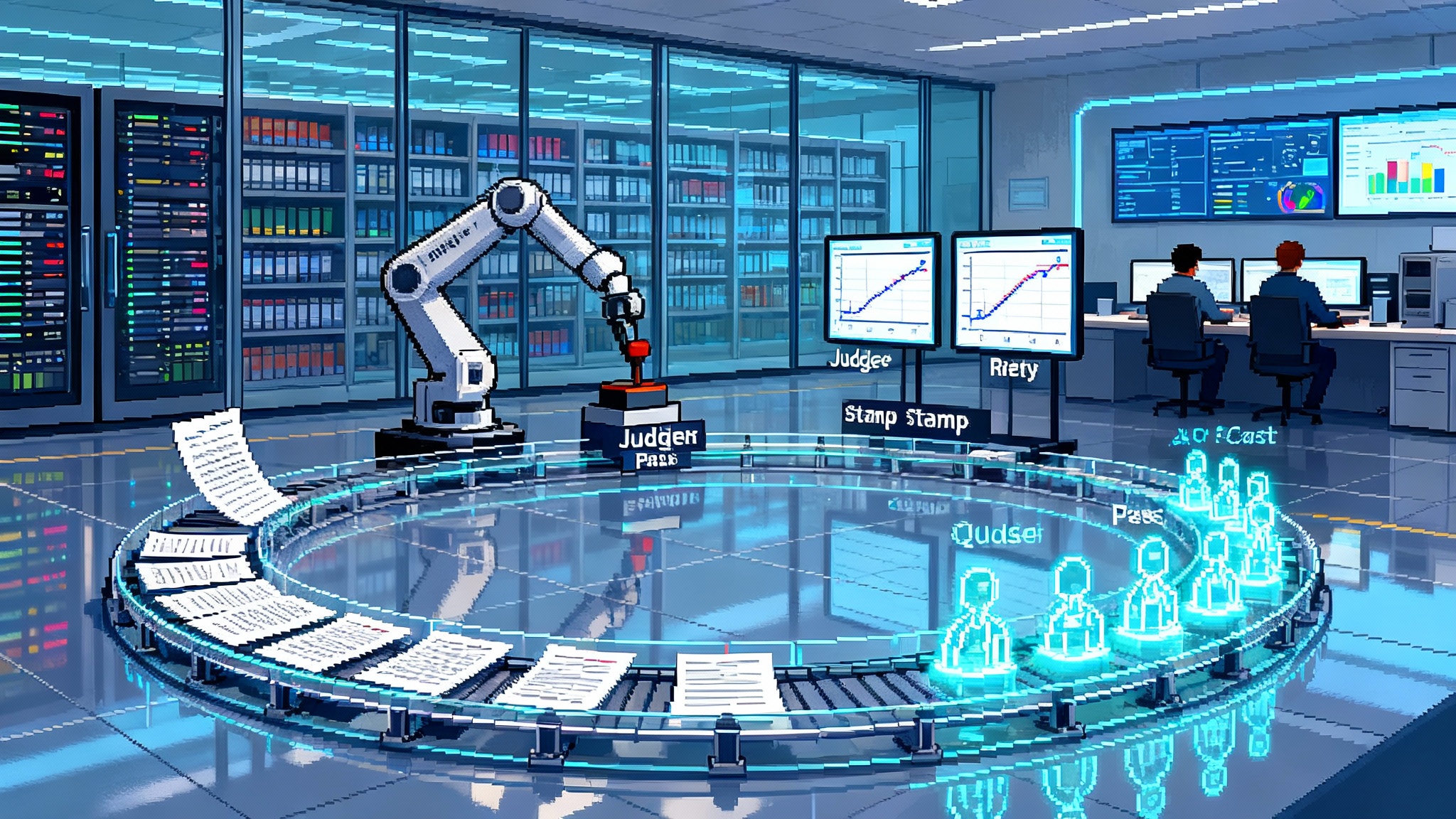Manus goes global and the consumer agent finally lands
In 2025, Manus went viral, OpenAI attached a virtual computer to ChatGPT, and Cloudflare hosted MCP. Together they reset how consumer agents work, ship, and make money heading into 2026.

The moment the demos ended
In early March 2025, Manus jumped from novelty to mainstream. A four minute launch clip ricocheted across social feeds, the waitlist swelled into the millions within days, and invite codes began trading hands for eye watering sums. A few months later, the team shipped a steadier, faster release and quietly expanded access. This was not just hype. It was a signal that consumer grade, computer using agents had finally escaped demo land and were starting to operate as durable products.
If the years before were about model fireworks, 2025 was about agency. Manus showed consumers an agent that could open a browser, sign in, navigate finicky websites, fill forms, juggle tabs, download files, and come back with finished work. On July 17, 2025, OpenAI made a parallel move when it introduced the ChatGPT agent, an integrated virtual computer that can research the web, handle email and calendar connectors, fill spreadsheets, and ask for permission before consequential actions. OpenAI’s framing was simple and powerful: ChatGPT would now think and act, not just chat. You can read their description of the product in Introducing ChatGPT agent.
Meanwhile, in April 2025, Cloudflare took a different swing. It did not ship a consumer agent. It shipped infrastructure. By offering the first remote Model Context Protocol servers on its global network, plus generally available Workflows and a free tier for Durable Objects, Cloudflare turned agent connectivity and state into a hosted, internet native primitive. Their pitch was clear: developers can build agents that persist, authenticate, and coordinate tools over the network without running local glue. The announcement is detailed in Remote MCP server and durable agent primitives.
A viral consumer agent, a general purpose agent embedded into the most popular assistant, and a network provider industrializing the agent backbone. That triad is the story. Together they quietly change the commercial shape, the safety assumptions, and the deployment stack for agents in 2026.
Why Manus broke through
Three design choices pushed Manus out of the lab and into people’s hands.
-
It used the computer, not just an API. Instead of waiting for every service to publish neat endpoints, Manus automated the same browser interfaces users already touch. This mattered for coverage. E commerce checkouts, travel sites, internal dashboards, and government portals often lack friendly API access or require months of paperwork. A human style browser lets an agent work wherever a user can work, today.
-
It was multi model and orchestration first. Manus did not bet the experience on a single model. It turned the model into a replaceable engine, then wrapped it with a planner and executor loop that decomposes tasks into steps, runs them, observes results, and retries. That loop looks simple on a diagram. In practice, it is what turns one prompt into an afternoon of useful progress.
-
It grew with friction by design. The invite only rollout and daily credit mechanics were not just marketing. They sized the blast radius while Manus learned which websites break the most, which steps fail under load, and which unsafe requests show up in the wild. The company shipped more capacity as it hardened the loop and expanded its integration list.
The lesson is not that hype alone can birth a market. It is that the right agent surface, combined with orchestration and a paced rollout, can turn brittle demonstrations into compounding reliability. For teams turning agents from prototype into product, this is the same spirit we explored in AgentKit moves AI agents from demo to deployable platform.
How OpenAI’s ChatGPT agent reframes expectations
OpenAI’s July launch did two things to the consumer mental model. First, it normalized the idea that the default assistant will have a virtual computer attached. People can ask for a trip plan and watch the agent research options, compare prices, and stage a purchase, while pausing for permission at the right moments. Second, it pulled deep research and browser actions into the same flow. The handoff between reasoning and doing is where earlier agents stumbled. By integrating a virtual desktop, connectors, and granular permission prompts, OpenAI made that handoff feel native.
For builders and buyers, this redefines the competitive set. Vertical agents now compete not only with other startups but with a general purpose agent that is installed everywhere and comes with acceptable defaults for safety, logging, and consent. That pushes vertical agents to be either much more reliable on narrow tasks, or more deeply integrated with industry specific data, or both. It also raises the bar on identity and delegation, a theme we covered in Agent ID makes AI agents first class enterprise identities.
Why Cloudflare’s remote MCP matters more than it sounds
Model Context Protocol is a simple idea with outsized impact. It standardizes how an agent discovers tools, asks for context, and performs actions. Before 2025, most deployments ran these servers locally on a laptop. That worked for demos and pilots. It did not scale to consumer reality, where the agent needs to persist state, coordinate across devices, and connect to services securely from anywhere.
Cloudflare’s remote servers flip that default. Suddenly, an agent running on a phone can connect to a remote tool server that stores state in Durable Objects, runs long lived workflows, and mediates authentication with providers like Auth0, Stytch, or WorkOS. The result is a hosted backbone for capability discovery and permissioned action. It reduces the custom plumbing teams had to write and also makes it easier to reason about data boundaries and audit trails. The larger industry shift is that agent operations are turning into cloud primitives, similar to themes in AWS turns AgentOps into a cloud primitive with Bedrock AgentCore.
Three stacks, one market
The triad reveals three distinct stacks that will coexist and blend.
-
Consumer browser automation. The Manus pattern uses headful browsing, visual cues, and DOM element extraction to operate websites the way people do. It is model agnostic, resilient when APIs are missing, and fast to expand coverage. Its tradeoffs are sensitivity to user interface changes, susceptibility to prompt injection and clickjacking, and higher per action cost.
-
Virtual computer with first party tools. The OpenAI pattern bakes a virtual desktop into the assistant and gives it a toolbox of connectors with explicit permissions. It trades some reach for predictable ergonomics and a simpler trust model. It can pause for approvals, simulate actions, and keep you in the loop as it works.
-
Remote Model Context Protocol and durable orchestration. The Cloudflare pattern treats agents as internet services. Tools live behind an authenticated perimeter, context persists in networked state, and workflows run for minutes or days. It makes agents easier to distribute, monitor, and pay for, and it aligns with enterprise compliance teams.
The interesting part is the overlap. Manus style browsing can call tools exposed via Model Context Protocol. A ChatGPT agent can combine its virtual desktop with a company’s remote servers for payroll or procurement. Cloudflare hosted tools can serve both. Over time, the category lines will blur as vendors harden the planner and executor loops, ship more connectors, and expose clearer permission boundaries.
What this means for agent commerce
-
The unit is the completed task. Consumers will not pay for tokens. They will pay for outcomes with clear deliverables, like a booked flight, a filed expense report, or a filled spreadsheet. Agents that meter by effort will lose to agents that price per outcome with transparent guardrails for refunds when automation fails.
-
Distribution looks like invites, credits, and churn insurance. Manus’s early access created scarcity that converted to online chatter and resale. OpenAI’s distribution is ubiquity with plan based access. Expect a hybrid: free daily tasks to seed habit, referral credits to drive growth, and a success refund to ease first time risk.
-
Marketplaces will lag tools. Everyone wants an agent app store. The near term winner is simpler: a catalog of trusted actions exposed via Model Context Protocol that agents can call. Think email sending, calendar booking, payroll submission, or vendor onboarding. Whoever curates the safest action catalog will own a significant slice of agent commerce.
-
Support is product. Users will ask why an agent clicked the wrong button, why it asked for a login again, or why it stopped halfway. The winners will ship replayable sessions, step by step logs, and one click retries that feel like a shipping tracker for automation.
A pragmatic safety model for consumer agents
You can build a consumer agent that is both useful and sane if you assume five failure modes and engineer for each.
-
Prompt injection and click capture. Websites can instruct an agent to steal secrets or click misleading elements. Use explicit allowlists for actions on unfamiliar domains, strip hidden elements, and render link targets in a sandboxed browser for verification. Record a screenshot and a diff of the relevant page regions for every irreversible action.
-
Identity confusion. Agents will mix user and agent identities if you let them. Force explicit identity selection before each action that writes data or spends money. Token scopes should be smallest necessary and time limited. Rotate credentials automatically and alert the user when scopes expand.
-
Stale user interfaces. The button moves and your agent breaks. Maintain page specific adapters for the top domains your users hit. When the adapter fails confidence checks, fall back to a read only mode, ask the user for a hint, or switch to a tool connector if one exists.
-
Unbounded tasks. If an agent can wander forever, it will. Cap every task with a budget and a time box, then expose both to the user. Offer a dry run mode that produces a plan and an estimate before any actions of consequence.
-
Phantom success. The agent claims victory, but the job is not done. Add external verification. For a booking, check for a confirmation email. For a spreadsheet edit, open and validate cell ranges. For a form submission, compare the pre and post states and store the proof.
None of this is theoretical. It is the minimum to earn trust in a system that clicks the internet for people.
Deployment patterns that will age well
-
Multi model orchestration over model idolization. Treat models like engines you can swap. Keep a planner and executor that can call different models for perception, reasoning, and action. Maintain two top tier engines for redundancy. Log cost and latency per step and switch when an engine’s performance drifts.
-
A browser and a toolbox. Use a headful browser for long tail coverage and Model Context Protocol tools for high value, high risk actions. When a tool exists, prefer it. When it does not, use the browser and record proof.
-
Hosted state with clear tenancy. Store agent state in a networked, per user object. Keep long running workflows resilient to restarts and deploy retries with backoff. Expose a user facing timeline of steps so support can help without asking for debug logs.
-
Permission by design. Build a permission layer that asks at the right level of abstraction. Not may I click submit, but may I book this flight for 312 dollars on July 22 with this card. Include a one tap always allow option for repeat actions and an always deny option for noisy domains.
-
Observability as a first class feature. Record page snapshots, text diffs, and tool call results. Index them by task, domain, and outcome. Make it accessible to the user so they can learn how the agent works and to your team so you can debug production incidents fast.
-
Cost and performance controls. Cache expensive intermediate results. Batch similar tasks. Prefer deterministic tools for repeated actions. Show users a live meter for budget and remaining steps.
-
Data boundaries you can explain. Separate user data from model training. Offer a simple export and delete flow. Make your privacy posture a selling point, not a paragraph in a policy.
The 2026 builder playbook: ship agents that last
This playbook is written for teams who want to avoid getting agent washed next year.
-
Nail a job to be done. Pick one workflow where users feel daily friction and where proof is unambiguous. Examples: reconcile receipts in a small business accounting app, draft and send weekly status emails for a sales team, or update pricing in a storefront and verify it live.
-
Decide your interface mix. For your top 20 domains, choose between a browser adapter and a tool connector. If there is a reliable tool connector, use it. If not, build a page adapter and confidence checks. Expect to maintain these adapters like you maintain API clients.
-
Build a permission model that people understand. For each irreversible action, define a clear prompt that summarizes what will happen, what it costs, and how the user can undo it. Make it interruptible. Store the proof of what was done.
-
Instrument reliability like a payments team. Track success rate per domain and per action over seven day windows. Add auto rollbacks when a domain’s adapter dips below threshold. Expose a public status page for top domains and actions so users can see the same truth your team sees.
-
Design for asynchronous work. Many valuable tasks take longer than a chat session. Persist progress. Notify the user with a link to a replay and a summary of outcomes. Offer a continue button that resumes where it left off.
-
Choose infrastructure that shrinks your surface area. For discovery and permissions, use Model Context Protocol so your agent can call vetted tools without bespoke glue. For state, pick a platform with per user objects and long running workflows. For authentication, integrate with a provider that supports scoped, time limited delegation.
-
Test with adversarial content. Seed your agent with prompts that try to exfiltrate secrets, manipulate click targets, or trigger purchases it did not intend. Fail loudly and log the evidence. Show your testers the guardrails in the product, not in a slide deck.
-
Price the outcome, not the tokens. Offer a free daily outcome to build habit. Then sell bundles of outcomes with success guarantees. Refund when automation fails. This keeps your incentives aligned with the customer’s definition of done.
-
Build support into the product. A help channel that can see task replays and page diffs will cut resolution time in half. A user who can replay an automation will forgive your product when a website changes.
-
Prepare for regulation by acting like you are already regulated. Keep an audit trail of actions, permissions, and evidence. Offer data export and deletion that actually works. Treat model providers as subprocessors and keep a list your legal team can explain.
What the triad really signals
Manus proved that consumers will try an agent that clicks the internet for them if it is fast, persistent, and feels like magic. OpenAI made the idea mainstream by attaching a virtual computer to the assistant people already use, then wrapping it in permission prompts and connectors. Cloudflare moved the market forward by turning agent tools and state into hosted primitives, so builders can ship faster and operate at scale.
Together they signal a simple but profound shift. The future of agents will be less about a single super smart model and more about a reliable system that plans, acts, verifies, and asks for permission at the right moments. In that world, the winners will not be those who promise autonomy in abstract. They will be the teams who can deliver outcomes with proof, price them fairly, and keep improving as the web changes under their feet.
If you are building in 2026, ignore the slogans and ship the loop: plan, act, verify, and ask. Do that with a browser and a toolbox. Do it with explicit permissions and replayable proof. Then give users one free outcome a day so they come back tomorrow. That is how you avoid getting agent washed and how you build something that lasts.
